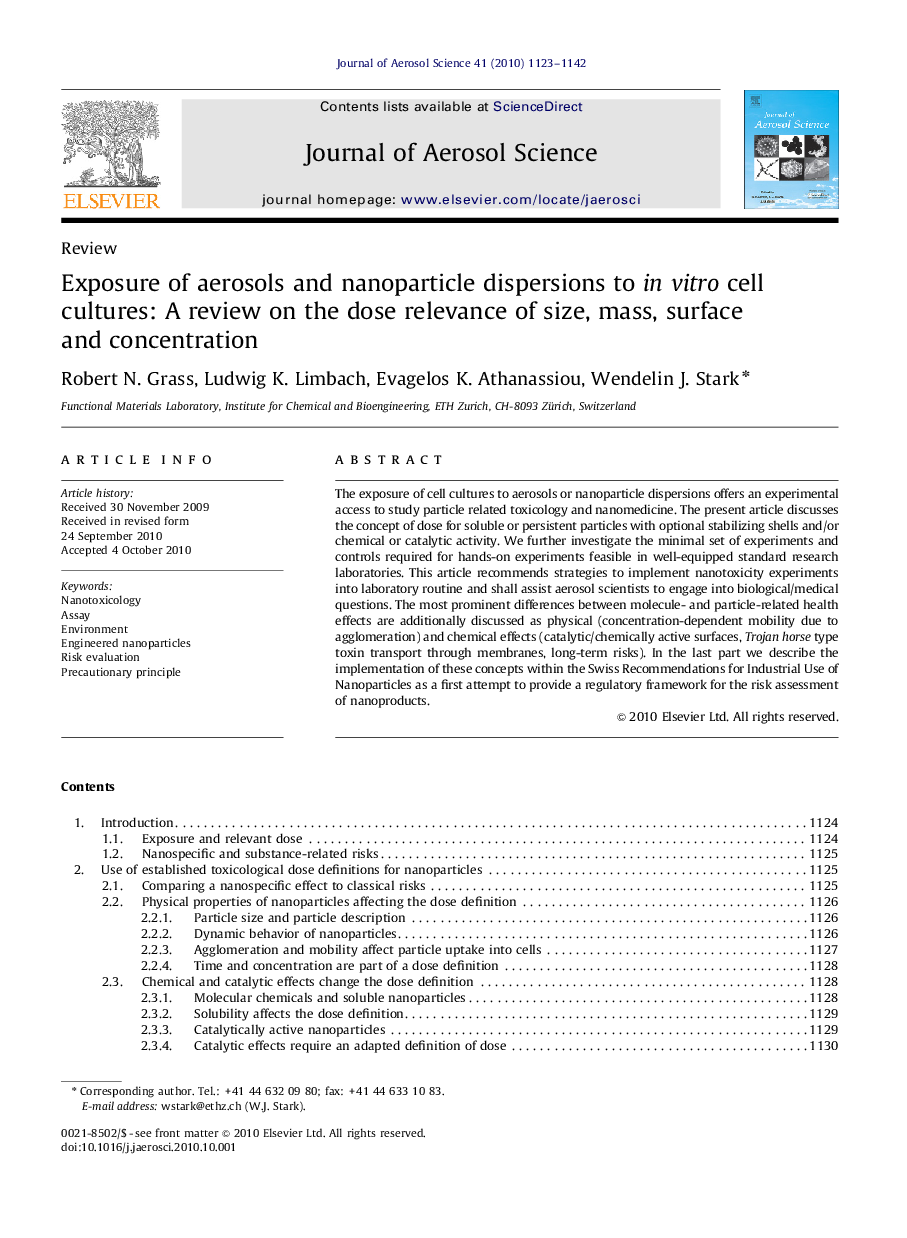| Article ID | Journal | Published Year | Pages | File Type |
|---|---|---|---|---|
| 4452813 | Journal of Aerosol Science | 2010 | 20 Pages |
The exposure of cell cultures to aerosols or nanoparticle dispersions offers an experimental access to study particle related toxicology and nanomedicine. The present article discusses the concept of dose for soluble or persistent particles with optional stabilizing shells and/or chemical or catalytic activity. We further investigate the minimal set of experiments and controls required for hands-on experiments feasible in well-equipped standard research laboratories. This article recommends strategies to implement nanotoxicity experiments into laboratory routine and shall assist aerosol scientists to engage into biological/medical questions. The most prominent differences between molecule- and particle-related health effects are additionally discussed as physical (concentration-dependent mobility due to agglomeration) and chemical effects (catalytic/chemically active surfaces, Trojan horse type toxin transport through membranes, long-term risks). In the last part we describe the implementation of these concepts within the Swiss Recommendations for Industrial Use of Nanoparticles as a first attempt to provide a regulatory framework for the risk assessment of nanoproducts.
Research Highlights► Review of dose concept in nanotoxicology. ► Differentiation of toxicity of soluble and unsoluble nanoparticles. ► Discussion of nanospecific toxicological mechanisms (e.g. Trojan horse). ► Discussion of state of the art in vitro experiments for nanotoxicology (liquid phase and aerosol).
